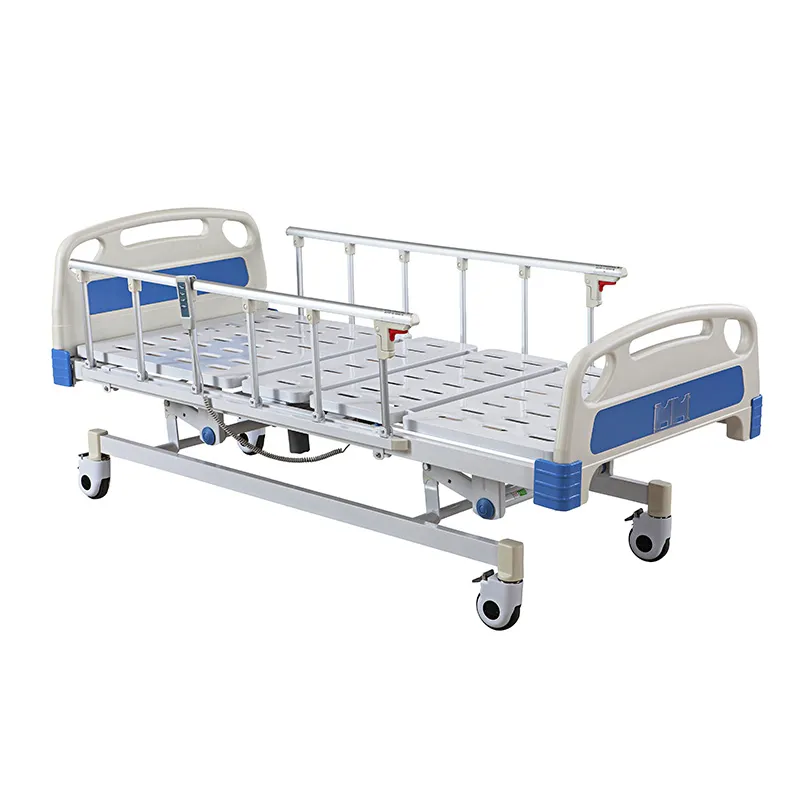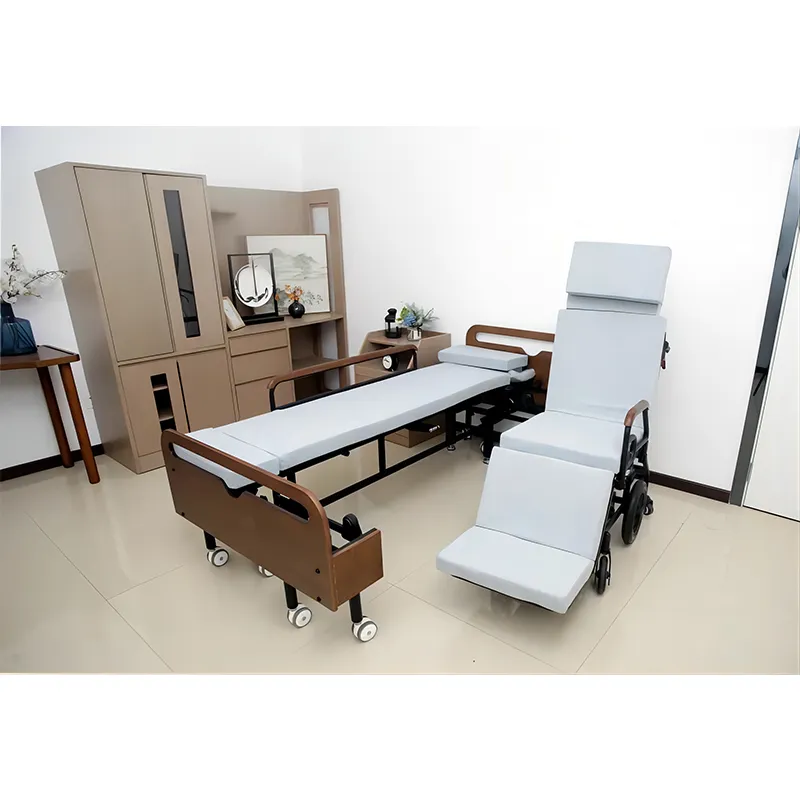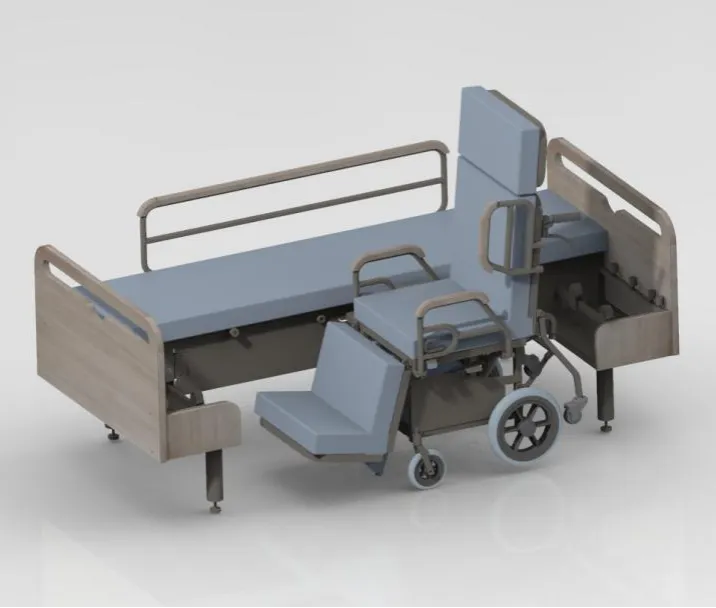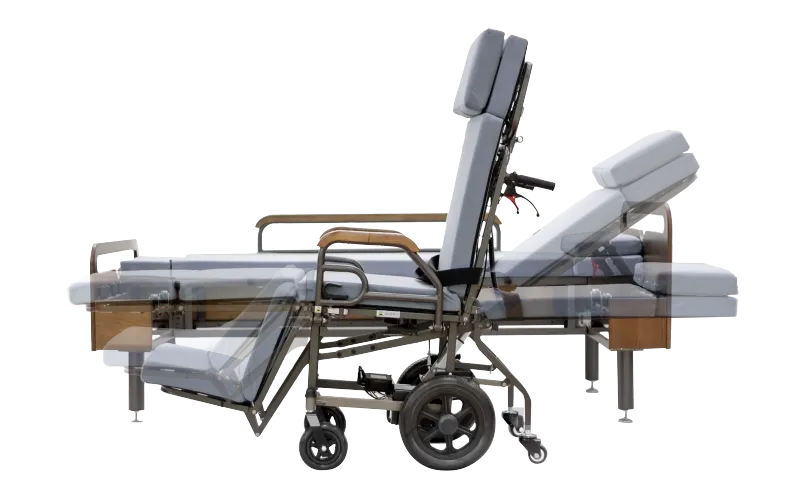
How Do Hospital Beds Help Patients With Dementia?
2024-09-26 15:30
As the global population ages, the number of patients with dementia is increasing year by year. Caring for patients with dementia is a complex and arduous task that requires not only great patience but also appropriate medical equipment to ensure the safety and comfort of patients. Hospital beds play an indispensable role in caring for patients with dementia.
This article will take a deep look at the characteristics of dementia and how hospital beds can help improve the quality of life of patients with dementia.

What Is Dementia?
Dementia is a brain disease characterized by the continuous degeneration of cognitive function. Unlike normal memory loss in the elderly, dementia can seriously affect the ability to carry out daily life. Dementia not only affects memory, but can also lead to the degeneration of language, thinking, judgment, and social skills. As the disease progresses, patients may lose the ability to take care of themselves and cannot carry out daily life activities.
Dementia is not a single disease, but a general term for multiple diseases, of which Alzheimer's disease is the most common type. In addition, there are vascular dementia, Lewy body dementia, frontotemporal dementia, etc. Although dementia manifests in many different ways, they all have one common feature, which is the irreversibility and continuous deterioration of the condition.
What aAre the Common Symptoms of Dementia?
The symptoms of dementia vary from person to person, and early symptoms are often hidden and easily mistaken for normal senile forgetfulness. However, as the disease progresses, symptoms gradually appear and worsen. The following are common symptoms of dementia patients:
● Memory loss: Memory loss is the first symptom of dementia. Patients often forget recent events and even the names of family and friends.
● Language disorders: Patients may have difficulty expressing themselves, often unable to find the right words or unable to express their ideas coherently.
● Confusion of thinking: Dementia patients gradually lose their logical thinking ability and have difficulty making simple inferences and judgments.
● Loss of sense of direction: Patients may lose their way, forget their way home, or even fail to recognize familiar environments.
● Abnormal behavior: Dementia patients often show abnormal behavior, such as repeatedly performing the same action, restlessness, irritability, or showing aggression.
● Emotional changes: The patient's emotional expression will become unstable, prone to anxiety, depression or mood swings.
● Social withdrawal: Due to the decline of cognitive function, the patient will gradually stay away from social activities, showing a tendency to be withdrawn and unwilling to communicate with others.

Is There a Cure for Dementia?
Unfortunately, there is currently no cure for dementia. Although scientists and medical researchers are working hard to find effective treatments, dementia remains irreversible to date. Existing treatments mainly focus on slowing down the progression of symptoms, improving the quality of life of patients, and providing supportive care.
Drug therapy can relieve some symptoms to a certain extent, such as the use of cholinesterase inhibitors can temporarily improve memory and cognitive function. However, these drugs are only effective in the short term and cannot reverse or prevent the progression of the disease.
In addition to drug therapy, non-drug therapies such as cognitive behavioral therapy, music therapy, and physical therapy are also widely used in the care of patients with dementia. These therapies can help patients maintain a certain degree of cognitive function and emotional stability, and reduce emotional symptoms such as anxiety and depression.
Dementia Vs. Alzheimer's
Dementia and Alzheimer's are often confused, and while there are many similarities between the two, they are not exactly the same.
Dementia is a broad term used to describe a range of symptoms that lead to a decline in cognitive function. It is not a specific disease, but rather a collection of symptoms that can be caused by a number of different causes.
Alzheimer's is the most common form of dementia, accounting for 60%-80% of all dementia cases. Alzheimer's is a progressive brain disease that usually begins with mild memory loss and progresses to severe loss of cognitive function. While Alzheimer's is one of the leading causes of dementia, not all people with dementia have Alzheimer's.
Other types of dementia include vascular dementia, Lewy body dementia, and frontotemporal dementia. Each type of dementia has its own unique causes and symptoms, but they all lead to a progressive loss of cognitive function.

How Do Hospital Beds Help People With Dementia?
Hospital beds play a key role in caring for patients with dementia, especially in the more severe stages of the disease. As dementia progresses, patients' physical and cognitive abilities decline significantly, and they may lose their ability to move or even spend most of their time in bed. Therefore, the design and functionality of hospital beds are essential to ensure their safety and comfort.
Provide a comfortable and safe environment
Hospital beds are usually equipped with a variety of adjustment functions, which can adjust the head, foot and overall height of the bed according to the needs of the patient. These features not only help patients maintain a comfortable posture, but also facilitate operation and care by caregivers, reducing the risk of patients being injured during transfer.
For patients with dementia, safety is a major issue. They may try to get out of bed due to disorientation, confusion or abnormal behavior, resulting in falls or other accidental injuries. The guardrails and fall prevention design of hospital beds can effectively prevent such accidents.
Help manage daily care
Dementia patients often require round-the-clock care, and the versatility of hospital beds makes care more efficient and convenient. For example, the electric adjustment function can help caregivers easily adjust the patient's posture and reduce the risk of bedsores caused by prolonged pressure on the patient's skin. The lifting function of the head of the bed can also provide additional support when the patient is eating, washing or receiving treatment.
In addition, some hospital beds are equipped with intelligent monitoring systems that can monitor the patient's physical condition, such as heart rate, breathing and activity level in real time. This information helps caregivers to detect and respond to potential health problems in a timely manner.
Hospital Beds Can Help Prevent Falls and Nighttime Injuries in Patients With Dementia
Nighttime is the time when patients with dementia are most likely to have accidents. Many patients will show "sundown syndrome" at night, that is, they become more confused and anxious at dusk or at night, and are prone to disorientation or try to leave the bed. To prevent nighttime injuries, hospital beds offer a variety of designs and functions.
Anti-fall guardrails
Hospital beds are usually equipped with adjustable guardrails to prevent patients from accidentally rolling off the bed. These guardrails can be moved up and down when necessary, making it easier for caregivers to take care of patients. For patients with dementia, guardrails are an important safety barrier that can reduce the risk of falls.
Adjustable bed height
Some hospital beds allow the bed height to be adjusted to a very low position, so that the bed surface is close to the ground. If the patient gets out of bed unexpectedly, lowering the bed surface can reduce the damage caused by falling. In addition, protective pads can be placed under the bed to further reduce the risk of injury.
Intelligent monitoring and alarm system
Modern hospital beds are equipped with advanced monitoring and alarm systems that can monitor the patient's activities in real time. If the patient tries to get out of bed at night, the system will immediately sound an alarm to remind the caregiver to take action. These systems not only improve the efficiency of care, but also intervene in time in emergencies to avoid accidents.

Bed Assistance and Assistance to Caregivers of Dementia Patients
Caring for patients with dementia is a highly challenging task. Caregivers not only need to deal with the patient's physical care, but also deal with their cognitive impairment and emotional changes. Hospital beds reduce the burden on caregivers through their multifunctional design and intelligent system, helping them to better care for patients.
Reduce physical burden
Traditional beds require caregivers to manually adjust the height of the head and foot of the bed, while modern hospital beds are usually equipped with electric adjustment functions, which caregivers can complete by simply pressing a button. This not only saves time and energy, but also reduces the risk of caregivers being injured when lifting and moving patients.
Improve nursing efficiency
The intelligent monitoring system of hospital beds can provide patients' health data in real time, allowing caregivers to better monitor patients' status and respond to emergencies in a timely manner. Some high-end beds are also equipped with remote monitoring functions, allowing caregivers to view patients' real-time data through mobile phones or tablets, which is particularly useful when caring for patients with dementia.
Provide psychological support
Caring for patients with dementia is not only a physical challenge, but also a psychological test. Hospital beds can reduce patients' anxiety and uneasiness by providing a safe and comfortable nursing environment, thereby reducing the pressure on caregivers. The patient's comfort is improved, and the difficulty of nursing work is also reduced accordingly.








